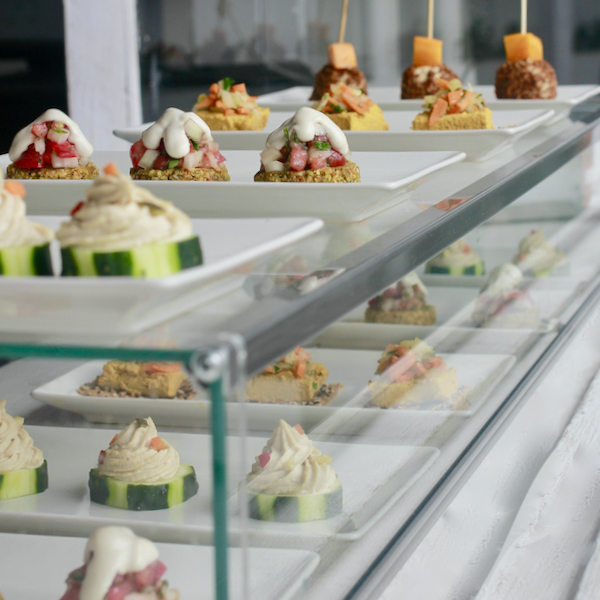
After our visit to the organic fair Biocultura 2016 in Barcelona (don’t miss the Special Report) the quotidian cooks are again engaged in our phylosophical discussions. Today: Is Natural Cooking a fashion or a need?
We were shooting chef Prabhu cooking live a beautiful dish of Quinoa with Seaweeds when TV reporters burst in. The national TV asked the following question to the chef: Do you think that ‘green’ cooking is in fashion? And of course, the quotidians could not stop tearing apart. Green cooking ? What is it? Spinachs? Or a fabulous Portuguese Green Broth (Caldo verde)?
Ironies apart, there is an increasing interest in a healthier lifestyle and this begins with food. The very Biocultura Fair has increased from 70,000 to 80,000 visitors in one year. Curiously enough, without institutional support and almost no presence of media. Is this robust response an aimless fashion that people follow? We mean, they just follow?
We see powerful reasons behind this growing interest: the rejection of a too excessive industrial food system, the search for a more harmonious and healthy lifestyle and, let’s not forget, the affirmation of an identity. In any case, our ideas pale in light of the chef’s answer, the brilliant Prabhu Sukh, which we offer you in an exclusive clip (original in Spanish, subtitled in English):
Chef Prabhu Sukh live in Biocultura 2016 (With English subtitles)
In order to celebrate such an answer, we are cooking an easy but straightforward dish which takes us back to the origin of cereals. Made with spelt, the Greek’s and Roman’s wheat, whose cultivation was abandoned because of its poorer yield compared to conventional wheat. Spelt wins wheat in nutritional properties, as it has more proteins, fiber and its gluten is water-soluble, making it more digestive (although it is not suitable for gluten-intolerant people). You can read it here, in Organic Facts.
Spelt’s most common use is in baking and preparations with its flour, but we can also use it unprocessed. For this Spelt Berries with Vegetables recipe we are using spelt grains. Here they are:

From a culinary point of view they are very easy to work with, since they perform like whole rice. Its cooking time, presentation and versatility are very similar. Spelt has a firm texture and a nutty flavor which reminds of walnuts. Combined with vegetables it offers a clean flavor profile with a mild background from the East Mediterranean provided by the turmeric. Enjoy!
- 2 cups of spelt grains
- 4 cups of water
- Salt, turmeric and pepper
- Mushrooms, garlic and parsley, lemon juice
- 1 leek (the white part and part of the green one, too) finely cut
- 3 kale leaves
- ½ zucchini
- 1 carrot
- Sunflower and pumpkin seeds to garnish
- Extra virgin olive oil
- 1 tablespoon of quality soy sauce
- Cook the spelt with the water, counting 35 minutes once it boils and reducing heat to the minimum, with the lid on the pot. Strain and set aside.
- In a pan, sauté the mushrooms (drizzling them with lemon juice so they do not turn dark) with the garlic and parsley until they are done. Set aside.
- Grate the carrot, wet it with a good dash of lemon so it does not rust and set aside
- Cut the zucchini in little sticks or dices and set aside.
- In a large iron casserole, put 3 spoonfuls of oil to heat, and sauté the leek. Add a pinch of salt, a cofee spoon of turmeric and freshly-ground black pepper and sauté three more minutes.
- Take out the kale stems and discard. Cut the leaves in 1 cm pieces approx. Put into the sauté and add some water or broth so it does not dry.
- Add the mushrooms and the cooked spelt, and stir to integrate the flavors.
- Add the tablespoon of soy sauce and the zucchini and keep on stirring for one minute.
- Add the grated carrot and stir until it is well distributed but hardly cooked, so it remains crunchy.
- Put off the heat, sprinkle some sunflower and pumpkin seeds and a good dash of oil and plate.
Turmeric is fat-soluble, and thus it is important to pour it at the beginning, with the oil in the sautée. Ground black pepper enhances the turmeric's beneficial effects about 20 times.
The dish admits any other vegetable combination (peas, beans...) and other mushrooms (boletus edulis, shiitake, maitake...) according to your creativity, exactly the same as you would do with rice.











I missed the Biocultura Fair this year …I will live vicariously through your experience of it! I love this new recipe it looks delicious and of course very nutritious…que rico! Thanks for sharing this with us!
…I will live vicariously through your experience of it! I love this new recipe it looks delicious and of course very nutritious…que rico! Thanks for sharing this with us!
Dear Christine, Many thanks for your words. Keep on watching us! More interviews and cooking shows are coming. The next ones: What´s behind organic wines? (Interview) and Cooking with seaweeds! You will love it!